It’s been a year of confrontation at the movies, as the domestic and international conflicts of the past several years have reached varying degrees of terminus, seemingly (but just as likely not). Battles in the world between tradition and (r)evolution, in all the myriad forms that those themes can take, dominated headlines and cultural discourse, and naturally that theme extended to the cinema. Systemic failures and abstract ideations of morality proved topical narrative fodder for an array of 2019 films, including some of our favorites like Parasite, Joker, Dark Waters, and Dragged Across Concrete. Asako I & II, Waves, and Marriage Story all utilized a bifurcated story structure in service of high concepts rather than mere emotional/psychological ends. There were also films that sought to confront the limitations of cinematic language, that confounded modes of moviemaking (Gemini Man, Glass, Black Mother), and others (Once Upon a Time in Hollywood, Climax, Grass) that found their respective directors taking stock of themselves and offering self-reflexive variations of their established formal strategies. The Irishman did both. So perhaps, then, it’s a sign of hope that, amidst the industry turmoil, mergers, and commercial and artistic gambits of 2019, the year’s best films leaned on conflict analysis, a scrutiny of the past, and an interrogation of self and circumstance as fuel for a better future. Luke Gorham
Honorable Mentions:
Cats, Chinese Portrait, Dark Waters, Grass, High Flying Bird, Honeyland, La Flor, The Lighthouse, Little Women, Marriage Story, Pain & Glory, The Plagiarists, Portrait of a Lady on Fire, 6 Underground, Waves
10 Performances We Loved:
1. Zhao Tao | Ash is the Purest White
2. Joe Pesci | The Irishman
3. Elizabeth Moss | Her Smell
4. Paul Walter Hauser | Richard Jewell
5. Brad Pitt | Once Upon a Time in Hollywood
6. Lupita Nyong’o | Us
7. Bill Camp | Dark Waters
8. Franz Rogowski | Transit
9. Kim Min-hee | Grass
10. August Diehl | A Hidden Life
20. At one point in S. Craig Zahler’s latest pulp epic Dragged Across Concrete, one of the main characters — both of them are arguably racist and certainly overly aggressive white cops — asks his partner: “You don’t have anything to say about our culpability?” They’re both on suspension for excessive force and looking to make up for lost paychecks by robbing some bad guys, but there’s a more meta implication here. Zahler’s already been noted for his unsettling political incorrectness and focus on some pretty toxic strains of masculinity, and in today’s climate it’s all too easy — maybe even expected — to use an artist’s personal politics in evaluating a work. But for every perceived sign of Zahler’s unpleasantness, there’s a subtle countersign, and ultimately the director’s main preoccupation seems to be creating an ocean of anxiety and discomfiting verisimilitude for his very unpleasant characters to swim in. He does this in one languid scene after another, each densely packed with detail and florid dialogue, stacked up in an almost literary, chapter-like order, and punctuated with some of the most vicious violence ever put to film. Any questions you have about the director’s worldview won’t be answered here, but all the same, this is an idiosyncratic exploration of race, police power, class, and crime. Matt Lynch
19. Character and narrative have long been overly prized in cinema, period. There’s so much more potential in the persuasive aesthetic power of moving pictures than to tell a good story or to understand the psychology of a particular, inevitably in some way fictionalized individual. Todd Philips’s Joker, of all things, is a surprisingly precise example of this. Yes, one can argue — and many have — that Philips plays fast-and-loose with the specifics of Arthur Fleck’s née Joker’s (Jaoqin Phoenix) mental illness, that the protagonist of this film exhibits a cocktail of maladies from bipolar to disassociative personality disorder to depression and, of course, the PBA affect. I won’t say to disregard the inconsistencies of the psychology here, because they do diminish some of the emotional resonance of Philips’s film. But I will contend that to fixate on these flaws is to miss the message of one of the most provocative, complex, and altogether topically political films of the year. Besides, it’s worth noting that much of Joker’s strength in fact comes from its contradictions: It’s a seeming defense of a well-intentioned, deeply hurt individual subjected to the cruel indignities of society…until it isn’t. The film’s greatest sequence is also the scene when the Joker stages his big coming out, in full clown regalia, joining TV host Murray Franklin (Robert De Niro) and defending his remorseless violence against an unsympathetic world. De Niro’s vexed host listens, with patience, to the screed, before finally chiding Arthur for his display of “self-pity.” It’s to this film’s great credit that it values both positions stated, but also that it recognizes where understandings breakdown and our system fails. Because this isn’t, ultimately, a defense of a put-upon man out for revenge — it’s a condemnation of the system and of all the behaviors it breeds, a clear-eyed, moral film about forces that radicalize blighted members of society, and the granular moment when victim becomes villain. Sam C. Mac
18. Carlos Reygadas begins Our Time as he does all of his films: a scene overflowing in sensorial imagery that leaves the viewer transfixed even after they’re gone (and before all else has begun). Here, he spends a dozen minutes documenting the exuberant playtime of teenagers and younger kids. As we witness them roughhousing in muddy waters, Reygadas’s wide-angle shots capture the expanse of the outdoor space, but also the seemingly infinite ecstasy that arrives in such moments of unworried adolescent life. There’s little mystique here, as was the case in previous opening scenes: Reygadas traces the length of human bodies lying down, he captures lovers kissing — the energy, sexual and otherwise, is palpable. This opening scene — brightly lit and overflowing with obvious emotions — serves to contrast the remainder of the film. Over the course of three hours, focus narrows to the lives of the film’s central characters: a couple comprised of Juan (played by Reygadas himself) and Ester (played by Reygadas’s wife Natalia López). While the two are in an open marriage, Juan becomes jealous after Ester falls for a man named Phil. The easy pleasures present in the film’s opening scene become increasingly fleeting, if not wholly absent, as the film progresses. This uneasiness is heightened in several ways — the muted color palette; the confinement of interior spaces; the presence of naked bodies, which are no longer accompanied by uncomplicated sensual pleasures. Poignant, then, is the film’s greatest irony: that despite Juan’s status as a masterful poet, he fails to communicate and reconnect with his wife. While purportedly not autobiographical, the presence of both Reygadas and his wife inevitably lends itself to greater emotional intensity. The intentionality of this casting, coupled with the lack of clarity with which Our Time ends — there is no hope, no contentment, no absolution to be found — adds yet another layer of melancholy and dramatic heft to the proceedings, leveraging this context into more depthful considerations of marriage and love. Joshua Minsoo Kim
17. Claire Denis’s cinema has, of late, been marked by conflict: whether it be confronting her relationship with colonization in White Material or the challenges of contemporary dating in Let the Sunshine In, Denis is always fighting comfort in her films. In High Life, perhaps the provocateur’s most inciting film, Denis takes a kaleidoscopic approach to the contemporary maladies and transgressions she’s been obsessed with for decades. Monte (Robert Pattison) has been sent to space with other life-sentence and death row criminals on a fraught mission to collect energy from black holes. As the title card appears, Monte is already cleaning up the wreckage, dumping crew members’ bodies in space as a toddler wails over his com system. Through vignette-like, nonlinear storytelling, the bodies are filled by criminals like Dibs (including a kooky and electric Juliette Binoche), a family-slaughtering doctor conducting an insemination experiment (read: serial rape) on her passengers. Quickly, the bunk beds, the close proximities, and the baser nature of people ignite as increasingly violent provocations among characters spill into the audience consciousness. Mileage will vary in what’s to take away from High Life, a film that’s pain and ugliness is so often meaningless, reflecting back to the earthlings that have populated Denis’s darker work like Bastards and Trouble Every Day. When auteurs go to space, they often return with starry-eyed hope for the future of humanity, but High Life sees power dynamics that cut down progress and people stuck in their ways even when lost and adrift. By moving earthly loneliness and taboos to space, Denis opens up a new toolbox of formal playthings, crafting clinical locations that are foreign, performances that are bizarre and unpredictable, and psychedelic space sequences — without the hope that usually accompanies the end of an interstellar journey. A new face in the Denis collaboration pantheon, cinematographer Yorick Le Saux shoots sultry, cool images that play with the work of longtime Denis collaborator Stuart A. Staples, whose striking, chameleonic score is also among the best of this year. High Life is a technically exciting, near inexplicable showcase of distrust and of cynicism in humanity pushed to its capacity — think more New French Extremity and less what’s made for nine figures across the Atlantic. Tanner Stechnij
16. 2019 will prove to be a pivotal year for American cinema, what with Disney asserting their domination over popular cinema via their Fox merger which resulted in the company closing out the year with eight out of ten of the year’s highest grossing films. By extension, much of film discourse centered on Disney’s Marvel superhero films, a most contentious battleground that pitted New Hollywood luminaries against studio execs and James Gunn. But months before the highly publicized Scorsese/Marvel feud broke out, M. Night Shayamalan released Glass, a superhero movie that slyly critiques the current state of big budget filmmaking in America, while presenting itself as a solution to the problem of the hyper-corporate filmmaking ethos that guides Disney’s projects. Yet, Glass is also pure Shayamalan, an inversion of The Sixth Sense’s narrative that assesses the director’s growth alongside the industry he works within. Concluding the story set up in Unbreakable (and reanimated in Split), Glass finds its three superpowered leads imprisoned in a psychiatric hospital run by a doctor who seeks to convince her patients that they’re abilities are born out of delusion and merely the product of mental illness. Shayamalan’s metaphor is potent, and gets at the way in which enforcing homogeneity of aesthetic and expression builds up to the more threatening fascist demands of conformity of thought and mental health. Glass is a subversive film, but not a cynical one, pushing back against genre convention and expectation, but doing so in the pursuit of creating something new and optimistic. M.G. Mallioux
15. Over the course of the decade, Gaspar Noe’s tenuous grasp of and grasping towards character identification and story logic grew even more tenuous. Which is to say, Climax has intense focus for a film that eschews both these things. It wants to embody an acid trip, but not from the petty intellectualism of Enter the Void’s DMT visuals. The thin-excuse-for-a-plot constantly morphs. Restraint as regards camera movement and compositional ambition — the kind Noe has previously shunned — along with a surgical precision in each shot’s specific intent gives his often simple editing more power. In stabilizing his camera’s movements, Noe allows emphasis to fall to the motion within the frame — often of hypnotic, ultra-physical dance. The stark contrast of roving versus static compositions make the latter feel like they’re breathing, a decision which only highlights how much they already heave with implication: each micro-scene in the “sober” phase of the film rests upon subtextual conflict made obvious by the political signaling characters espouse in their prologued interviews. Or, too, their physical identity (race, gender) — which Noe purposefully obfuscates with character actions that either harshly reject or embrace stereotypes (and this doesn’t even scratch the surface of how he uses gender fluidity as a narrative tool). Getting to know the scene — all the dancers — can be genuinely funny, but as the acid they unknowingly ingest begins to amplify their inputs, the horror easily follows. Each character interaction was already a powder keg, and now everyone begins exploding all on their own. Despite that, no “climax” ever comes. Sure, there is a lot of violence and sex and shit, but it’s just a mess. No catharsis, mostly pain. The camera follows whoever at this point, mindless. The witnessed scenes are often intense to an obnoxious degree, but thanks to the previous character work, each makes emotional sense in the moment. As distance and reflection set in — that is, as sound and image drift away from the previous most-interesting-thing — the staging becomes clear. Thin provocation; edgy for its own sake. It’s through this that Noe demonstrates how empathy, pushed to its extreme, transforms into artifice, but also the reverse: how empathy can be created from the artificial. Watching the film is an analog for dropping acid. The subtly evolving audiovisual landscape serves as both a dissociative tool and a constructive one, freeing us to form our own dialectics. Joe Biglin
14. The threat of the rising tide is never far in Ryûsuke Hamaguchi’s eminently effervescent follow-up to 2015’s Happy Hour. In telling of Asako’s (Erika Karata) amorous vacillations between the doubles played by Masahiro Higashide — flighty, feckless Baku and stable, self-effacing Ryôhei — Asako I & II flows along the seductive synth-backed streams of a pop romance. (The film’s swooning overture contains both an explosive, slo-mo kiss and a post-accident embrace on hot roadside pavement.) And yet, as exemplified by Karata’s marvelously opaque performance, the film also conceals undercurrents of unstable feeling. Although the film was adapted from Tomoka Shibasaki’s 2010 novel Netemo sametemo (whose title translates to “When Asleep or Awake”), its timeline crucially encompasses the 2011 Tōhoku Earthquake — a seismic event to match this film’s strange spectral force. There’s no allegorical implication to be found in either Baku’s initial abandonment of Asako, or the habitual volunteer work she later undertakes with Ryôhei in an outlying seaside town. But what the film conveys so magnificently is a sense of what it’s like to not just survive, but truly live in the wake of disaster, even when faced with uncertain waters. Like Eric Rohmer’s A Tale of Winter, Asako delineates a world of urban movement through which its female heroine must travel. The spiritual illumination of that film, though, is long gone, in place of which Hamaguchi presents the mysterious matters of Self and Others — the meaningfully titled Shigeo Gocho photo exhibition that recurs twice across the runtime. Indeed, although this modern romance, alternately set in Osaka and Tokyo, might from afar resemble a remarriage comedy, there is, in the end, only a tenuous rapprochement between Asako and her chosen lover. As they look out at a deceptively placid river in a becalmed closing two-shot, we are reminded that here, as in the rest of this preternaturally composed film of ever-shifting surfaces, still waters run deep. Lawrence Garcia
13. Historically accurate or not, the birth of cinema will always be tied to the unfathomable image of a train barreling towards the screen. And over a century after the Cinematograph’s invention, Ang Lee explicitly invokes that iconic image in his own attempt to push cinematic form into the future. Gemini Man opens not with a train arriving at a station, but a train departing from one — a fitting symbol for the film’s profound advancement of and departure from the mode of image-making pioneered by the Lumiere’s. As Lee’s late-period continues to blossom, his case as a legitimate auteur, and as perhaps the most formally audacious filmmaker in Hollywood, grows harder to deny. Gemini Man continues his experiments in 3-D as well as his fixation with high frame rates, demonstrating a clear progression of these technologies while also introducing a third one: a photorealistic CGI human. Will Smith plays Henry Brogan, a retired assassin who is targeted by his former organization, and soon finds himself pursued by a younger clone of himself. Unlike the digital de-aging employed in recent MCU movies or The Irishman, the younger version of Smith (called Junior in the film) is actually a fully digital avatar, constructed and animated to resemble Smith in his 20s. That Junior is so physically and emotionally convincing is remarkable, but it’s all the more impressive that the sight of, say, his eyes welling up with tears registers as genuine even in the crystal clarity of 120 FPS. Though Lee often talks about the technology’s potential for “immersion,” the film’s meager reception attests to the uncanny discomfort that its divergent images inspire in most viewers. But whether or not the film succeeds in its intended “hyper-realism,” what’s undeniable is that Gemini Man presents an entirely new way of seeing, and it’s thrilling. Even just the way it captures water is shockingly beautiful — every little ripple spreading with impossible fluidity — and a convincing argument for the value of the form, yet ultimately Lee’s film is more than a mere technological marvel. He manages to find something deeply moving in this by-the-numbers action script, resurrecting it 25 years after its initial conception with the same graceful approach and attention to detail of his more straightforward melodramas. And there is, of course, a fascinating resonance in the fact that a film so concerned with sight, and distortions in vision — often refracting its gaze through mirrors and other reflective surfaces — was released before any theaters were even equipped to properly project it. Brendan Nagle
12. Since its lauded premiere at this year’s Cannes Film Festival, Parasite has become one of the year’s biggest films, and labeled by some as a “return to form” for its South Korean director, Bong Joon Ho. (Where did said “form” go? Who knows; Bong has worked at a consistently high level, if you ask this writer.) Parasite could even be thought of as an appropriate punctuation mark at the end of what’s been an especially exceptional decade in the South Korean Cinema Renaissance. When all of this context eventually falls away, though, Parasite should be most remembered and acclaimed as just an enthralling piece of filmmaking: a demonstration of an auteur in full control of their abilities and an assured, tense drama with enough twists for it to grab the viewer’s attention all through its over-two-hour runtime. Some have taken to analyzing the specifics of the political/socioeconomic subtexts of Parasite, and have found it lacking. As a Chilean writer, what Bong’s film is really trying to say started to make more sense while observing the wave of protests here in this country. Parasite’s depiction of lower/higher class tensions provides a surprisingly accurate summary of what happened this year in, of all places, Santiago, and which has spread throughout Chile: the idea of a lower class that sees itself as prisoners of the financial markets, of the bourgeois and expectations of appearance, an idea that society has indoctrinated. The closing minutes of Parasite represent an inexorable push against the quintessential lie of capitalism, but they also grapple with the hopelessness of that effort. Jaime Grijalba Gomez
11. A victim of studio meddling, Ad Astra’s budget was increased by $20 million in order to accommodate for reshoots that shoehorned in a number of things easily described as superfluous. Nevertheless, it remains a strong film and one that frequently achieves a level of evocative photography rarely seen in the genre. Its story involves astronaut Roy McBride’s journey to discover why the ship that had been sent to the outer reaches of the solar system 26 years ago — captained by his father — is now sending out mysterious surges of power threatening life on Earth. As a text, it’s easy to understand how this film could be perceived as taking too many liberties with its storytelling and too thesis-driven to please everyone. But consider it the mark of a director who not only understands their craft but has also become adept at expressing their ideas visually that, for a narrative so linearly focused, Ad Astra can allow its most referential details to blow in the wind in a state of complementarity until the cathartic release of its ending. The core conflict here can be seen as being the tension between the inevitability of the release of Pitt’s repressed emotions regarding his father and the repression enforced by his status in this capitalist future / nightmare. Thus, the film becomes hyper-focused on said release, not in the eye-rolling sense that to save humanity he must first find his humanity, but rather, that the realization of humanity’s dependence on itself (that it is, in fact, alone in the universe) acts as a release and therefrom frames everything seen on the capital-driven wasteland of the moon as of the utmost importance to rectify. Director James Gray isn’t here to offer any solutions on this matter — his goal is to send humanity’s gaze out to the stars so that it can project all of our problems back at us, resting with the duality conjured by father and son, loss and hope, past and future — and end with the image of two clasped hands. Sam Thomas-Redfern
10. Part documentary, part travelogue, part poem, Black Mother is a deeply personal tribute to the Jamaican islands (the ancestral home of director Khalik Allah‘s mother), to the black experience, and specifically to the black women who gave birth to a nation. Allah — already a renowned photographer, whose 2015 debut film Field Niggas explored Harlem using an avant-garde approach similar to that of this new work — examines the effects of religion, both as symptom of Jamaican colonialism and as reaction to it, as Christianity and Rastafarianism blend together into something with its own unique agency. Through the lens of an American returning home to pay homage to his birthplace, Allah captures snippets of island life and blends them together into a juxtaposition of tradition and modernity, religion and secularism, colonialism and blackness. As a white man, I’ll admit that there are seeming limits to how well I can entirely appreciate, and generate responses to, Allah’s film — to understand it. But Black Mother isn’t intending to start a dialogue with the outside viewer so much as it’s a work to be observed and learned from, one whose rough-hewn images do all the talking that’s necessary to communicate its ideas and feelings. That’s the great beauty and mystery of Black Mother: the film’s extraordinary ability to speak volumes without much in the way of actual words, to embody something almost spiritual about the human experience, otherworldly and yet consistently grounded in the simple poetry of everyday life. Black Mother is as much a loving tribute to home as it is a search for the divine, a transcendental meditation whose yearning for the spark of God in humanity (and specifically historically marginalized black bodies) makes even mundanities feel miraculous. Mattie Lucas
9. Terrence Malick has hit a new career high with A Hidden Life, a lyrical but honest cinematic poem that takes on the subject of how far our faith can lead us during such precarious times as global war. During WWII, Austrian farmer Franz Jägerstätter (August Diehl) has a hard reckoning with this question, refusing to fight for Nazi Germany — an abdication that puts Franz in the constant danger of being arrested and, eventually, executed as a conscientious objector. Inspired by horrifying true events, Malick’s film manages to employ the least amount of screen violence while achieving a maximum volume of sympathy and reflection. Teaming for the first time with cinematographer Jörg Widmer (who also shot Wim Wenders’s Pina, and whose experience filming dance has value here), Malick suffuses his film with a sense of both calm and anxiety. The drastic contrast between compositions that use steadicam and the static master shots that establish the various locations wherein the film is set enforce the contradiction between the peace in Franz’s remote village and the brutality exerted on him in prison. Through this elaborate visualization, also, fascism almost uncannily surfaces amongst the villagers, which situates Franz’s wife, Franziska (Valerie Pachner), in the middle. Like her husband, Franziska commits to her own resistance — against collective resentment toward her family, holding on to her love for Franz, however she may feel about his decision. A veritable manifesto of righteous resistance, A Hidden Life also interrogates archive footage from sources such as the notorious Triumph of the Will. Unlike most war, or anti-war, films, though, Malick’s turns its back on the extreme polarizations that are often the province of movies that tackle these subjects. Instead, A Hidden Life is interested in the force behind, and the ultimate credibility of, our beliefs themselves. As Franziska says in one of the film’s voiceovers, “A time will come when we’ll know what all this is for, why there’s all this suffering. And there will be no mysteries — we’ll know why we live.” Wentao Ma

7. In addition to being a love letter to his home province of Kaili, Bi Gan’s gorgeous Kaili Blues, was one of the most accomplished cinematic debuts in recent memory. His follow-up to that, Long Day’s Journey Into Night (shot partially in 3-D), infamously went down badly with audiences in his native country, where it had been marketed as a far more mainstream product than Bi ultimately offered with this artfully meditative drama. While much of the moody romanticism and unspoken feeling in this tale of a man returning to his former town and recalling the story of his lost love feels like a nod to the lyrical work of Wong Kar-Wai, Long Day’s Journey Into Night evolves into an audaciously singular vision worthy of its own place in the annals of history. Bi has a way of using extended one-take sequences to immerse us into the world of his childhood: In Kaili Blues that involved a transporting motorcycle ride through the winding roads of his birthplace, while in Long Day’s Journey Into Night this takes the form of an ambitious hour-long sequence through the beautiful Kaili landscape, which becomes a metaphor for the human search for love and belonging. While the central character Luo asserts that “memories mix truth with lies,” Long Day’s Journey Into Night bedazzles with both its reverent use of classic cinematic noir elements (in this case concerned with the underbelly of China’s criminal network) and its lament for a happy ending that might have been. Impressively, Bi Gan is still only thirty years old, which all but guarantees that we have much more to enjoy from this wonderfully inventive filmmaker. Calum Reed
6. Building on the tripartite structure of his 2015 melodrama Mountains May Depart, Jia Zhangke borrows from deep within his own filmography for Ash Is Purest White, another story of the rapid transformation of the Chinese economy and 21st century cultural norms. Zhao Tao plays one half of a gangster couple, her allegiance to wuxia values signalled by the Wong Fei-hung theme that introduces and follows her throughout the film. Her boyfriend, played by Liao Fan, is less reliable though. While he appears to be the epitome of Triad cool, he has a hollow core that will shift with the nation’s changing fortunes. His musical theme is Sally Yeh’s “Drunk for Life”, the theme from John Woo’s The Killer, a theme Jia previously associated with petty criminality in his feature debut Xiao Wu, and one which tellingly Liao hears when watching not The Killer, but Taylor Wong’s Woo knock-off Tragic Hero: Liao is a counterfeit wuxia hero. This becomes apparent in the film’s second and third halves. In the second, Zhao is lost in the set of Jia’s 2005 film Still Life, scrounging her way to survival while Liao avoids her. She gathers herself (with the help of a stirring pop music performance, filmed in 2005 and intercut with Zhao in the present) and heads West, but there are UFOs there. The third act finds her back at home, Liao now dependent on her as his body has begun to rot along with his soul. She helps him, because that’s what wuxia heroes do in the jianghu, the border world of rivers and lakes that gives the film its Chinese title. Like a hero out of John Ford or Chang Cheh, Zhao sticks to her code and does what duty demands, even though she knows she’ll only be betrayed again in the end. Sean Gilman
5. Christian Petzold’s Transit opens on two men discussing their plans to escape Paris. Outside the windows of the café that they’re in, it’s just another day — at least until police cars go screaming by and soldiers come marching up the street. Then, the voiceover begins, an omniscient third person narration that is (at least at first) strikingly incongruous with what we see on screen. In a bold formal gambit, Petzold has inserted specific WWII-era details from Anna Seghers’s 1944 source novel into the film’s narration, which is then overlaid onto the narrative proper, which unfolds in our modern era. In some passages, the narration and image coexist in a confounding, contrapuntal relationship; in others, they dovetail and mirror each other. The effect is profoundly disorienting, even after one discerns what, exactly, is going on. As critic Neil Bahadur has pointed out, this conceit not only suggests the liminal space occupied by the characters — trapped between countries, desperate for escape — but also a new liminal space between past and present. Much like Petzold’s previous feature Phoenix nodded to and took elements from Hitchcock’s Vertigo, Transit’s narrative becomes a crypto-remake of Casablanca, as Georg (Franz Rogowski) takes on an assumed identity and becomes entangled with the wife of the man he is impersonating, all while attempting to attain a transit visa for himself and his fabricated significant other. Georg also strikes up a friendship of sorts with the wife and son of a fallen comrade, his connection with the boy complicating his desire to flee France for Mexico. In this way, Petzold chronicles the Kafka-esque travails of displaced peoples, whether it be fifty years ago or in the present. The past decade has seen huge movements of displaced peoples all across the globe, the largest forced migration of masses of people since WWII, a fact Petzold is surely aware of. Closer to home, America has seen its own border crisis calcify into a bona-fide human rights catastrophe, fostered by racist government policy and far right propaganda, aided and abetted by a cowardly mainstream media drowning in a ‘both sides’ quagmire. With Transit, Petzold brings the past back to life and casts the present into sharp relief, reminding us that those who forget are doomed to repeat. Daniel Gorman
4. In order to recreate the Los Angeles of the time, Quentin Tarantino and his production crew worked with city planners and various business owners over the course of many months, turning back the clock on the city to the year of 1969, searching for an ‘original’ rather than a computer-generated simulacrum. This is a noteworthy piece of information for an analysis of Once Upon a Time in Hollywood at the same time as it tells us a lot about Tarantino’s particular sensibilities. The story focuses on three characters: fictionalized Rick Dalton (Leonardo DiCaprio), the star of a 50s Western TV show, his stunt-double-turned-driver, Cliff Booth (Brad Pitt), and Sharon Tate (Margot Robbie), the actress and wife of Roman Polanski who remains well-known today for having been one of the victims of the Manson family murders. Layers of various texts constitute the film — fictional films to detail Rick’s career, commercials, flashbacks — always in reference to the multitude of characters whose respective images exist in dialogue with a plethora of socio-cultural signifiers and cultural objects, making it known to us the matrices in which these characters exist as well as their wider signifying function. Tarantino’s L.A. is a place of transition, marked by the shifts in the film industry of which Rick is a part: this can be seen most clearly in his eventual acceptance of a role in Spaghetti Westerns, even after conceding that it spells the downfall of his career. In an earlier scene where Rick is on the set of a Western film in which he plays the villain, he wonders “how’s the audience gonna know it’s [him]” under a load of costume and makeup, showing an expectation on his part for what his image should be: one centred around his position as a star and a recognizable face. This is echoed in Sharon’s interaction with the woman working at a theatre’s ticket booth: the woman’s inability to recognise the real thing speaks to a growing distance between the person and her image, representing not only a shift in how people consume such media but also a more general one in the industry’s approach to the marketing of stars. The irony of the finale, then, can be found in the Manson family’s comeuppance after having declared war against Hollywood’s actors for having presented images of violence to them their whole lives. Indeed, what they find is very much the real thing: humorously becoming one with their on-screen images, Rick and Cliff kill the would-be murderers before the former finally finds a real connection in this city of images, beyond mere occupations, with his neighbour Sharon. Sam Thomas-Redfern
3. A rare opal found within the mines of Ethiopia, born from human misery and exploitation. A New York jeweler who brings nothing but pain and suffering to the individuals within his orbit. The connection between the two is made clear in the opening moments of Benny and Josh Safdie’s Uncut Gems, as the camera whooshes and glides into the gleaming nodules of the opal, takes a circuitous route through its core, and winds up within the literal asshole of our protagonist, Howard Ratner (Adam Sandler). Subtle, this is not. Uncut Gems also holds the distinction of being perhaps the loudest film of the year — a cacophony of cries, screams, and moans, backed by a pulsing synth score courtesy of Daniel Lopatin. Foreground and background conversations crash and bleed into one another, layered to the point of madness. The Safdies are nothing if not masters of controlled chaos, which provides their films with an immediacy that’s both bracing and nerve-shredding. But what felt compact in Heaven Knows What and Good Time feels thrillingly epic here, as the film observes a week in the life of a desperate man addicted to risk. This is a live-wire film, embodied by Sandler’s stunning lead performance, which channels the screaming and whining and pent-up rage that he’s demonstrated across countless disposable comedies into a character that’s somehow both disgustingly pathetic and heartbreakingly empathetic. He is as an object of fascination to everyone he encounters, a man who can reflect both the best and worst of humanity. In an inspired bit of stunt casting, Kevin Garnett plays a heightened version of himself, a cocky basketball virtuoso who believes that the aforementioned opal brings good luck to those who possess it. Contrast that with Howard’s mistress, Julia (Julia Fox), a woman so blinded by her toxic relationship that she somehow believes Howard to be her salvation, a good man trapped by circumstance. As the Safdies make thrillingly clear, we see what we want to see based on the narratives we write for ourselves. The brilliance of the film lies in the fact that, for all its claustrophobia-inducing camerawork and oppressive sound design, we are ultimately viewing an objective analysis of one very troubled man on a crash course with the destiny he has created for himself. Like the love child of a coked-out ’70s-era Martin Scorsese and Robert Altman, Uncut Gems is a masterpiece of love and hate, right and wrong, egotism and fear — so 2019 in a nutshell. This is one for the time capsule. Steven Warner
2. Throughout his career Martin Scorsese has displayed a concerted formal interest in time, its all-encompassing nature and sweep, as well as the vacillation and degradation of his characters within this movement. Of the director’s four feature films of the 2010s, Hugo is perhaps the one that most explicitly engaged with the concept of time in its iconography and dramaturgy through the symbology of the clock as object and the manner in which cinema is marshalled to defeat the passing of ages. Yet if one takes a broader view, Scorsese’s grander epics of varying type — The Age of Innocence, Goodfellas, Gangs of New York, The Wolf of Wall Street, and Silence — each reckon time as the foundation and structure of myriad defeats, failures, secrets, or even wholly ambiguous reprieves. And with The Irishman, the director unites in text and form a knowing and elegiac engagement with what it is to face down time — to lose to it as it too is lost. With such a broad and comprehensive narrative at work — that of Frank Sheeran’s (Robert De Niro) decades-long involvement with both the Jimmy Hoffa-led Teamsters and the Bufalino crime family — undoubtedly one of the standout features of The Irishman’s production is Thelma Schoonmaker’s editing, remarkable for how it navigates the film’s memory-based flashback structure: an elderly Sheeran guides the viewer through various stages of his association with the mob and Hoffa, intertwining each period with the wider political and social milieu of the 1960s and 70s, before throwing everything prior into relief as both Sheeran and the viewer reckon with the state of his life and the extent to which his actions have ultimately come to define him and so haunt his final years. In contrast to such films as Goodfellas and The Wolf of Wall Street, which each stylize the lives of their criminals in order to capture and understand the jouissance, The Irishman assumes a much barer, more methodical and cold, visual scheme. It’s in this register that the use of deaging technology, in contrast to Hugo’s marshalling of the clock and digital textures to bring life, operates as a cinematic and Brechtian device to distance enjoyment by uncannily inflecting the events of the film with the futurity of time and the defeat it inflicts. Yet, for as masterful as much of the main body of this 3½-hour film’s runtime is, it is perhaps in its final stretch Scorsese finds himself at his most potent and, indeed, Catholic. In these moments, the director coalesces less his own work and fears and much more Sheeran’s neuroses and obsessions into a miasma of shame and guilt that cannot be lifted due to the refusal to speak and confess, his ability to only ever echo and follow another’s words as if they might save him his damnation. In a career that has so thoughtfully taken in the sweep of time and interrogated his character’s place and often obliviousness to it, in this most recent work—which may, indeed, be his magnum opus—Scorsese stares down this enemy and concludes: once you recognize it, you gotta accept it is what it is. Matt McCracken
1. An Elephant Sitting Still, Hu Bo’s ostensibly bleak epic of lives spent swimming upstream in China’s modern economic conditions, both depicts, and upsets, a certain fatalist sensibility. On the surface, and even without knowing the circumstances behind the film (its director took his own life shortly before its festival debut), a pervasive nihilism of both narrative and tone seem to couch Elephant in a double-downed hopelessness for nearly its entire runtime, its several threads moving inexorably toward some twining. But while the film toes the line of miserabilism, that largely context-heavy prescription is misleading: Hu’s commitment to intimacy means this is more emotional and psychological audit than cudgel, an interrogation of the myriad modern pressures that can engender despair rather than an embrace of any darker romanticism. What Hu crafts here is something closer to myth, or parable, than to realism — his characters, all suffering, are also ever-moving toward the formless promise of the titular Elephant. And Hu’s aesthetic approach works to further reinforce this reading; he heavily utilizes soulful, floating Steadicam shots, ghostly navigations of cramped quarters and decaying city streets, and high-angle orbiting shots, both grim and wistful, always with the feel of seeking a better vantage. These compositions make for an empathic visual language, with Hu’s commitment being a proximity to character, literally and figuratively. His patient approach finds characters held in lengthy, unabridged conversations, punctuated by uncomfortable silences and deflections, utilizing the micro temporality of a single day in the real-time creation of some existentialist epistemology. And yet, in other moments, the camera turns away from much of the gratuitous violence: a brutal dog attack and a beating that one of the characters suffers both occur offscreen, a delicate acknowledgement of the internal violence already borne by these individuals. Rather than only showing their pain, Hu instead allows his characters to reflect on it, mouthpieces to their own misery and misanthropic philosophers, before ultimately shattering any suggestion of indulgence with a poignant and devastating closing-moments exchange that serves as a final, pointed rejection of the previous four hours’ threat of resignation. “Don’t cry,” one character counsels another. “Why not?” she asks. In a defiant, evidential expression of hope, he responds: “No reason.” Luke Gorham

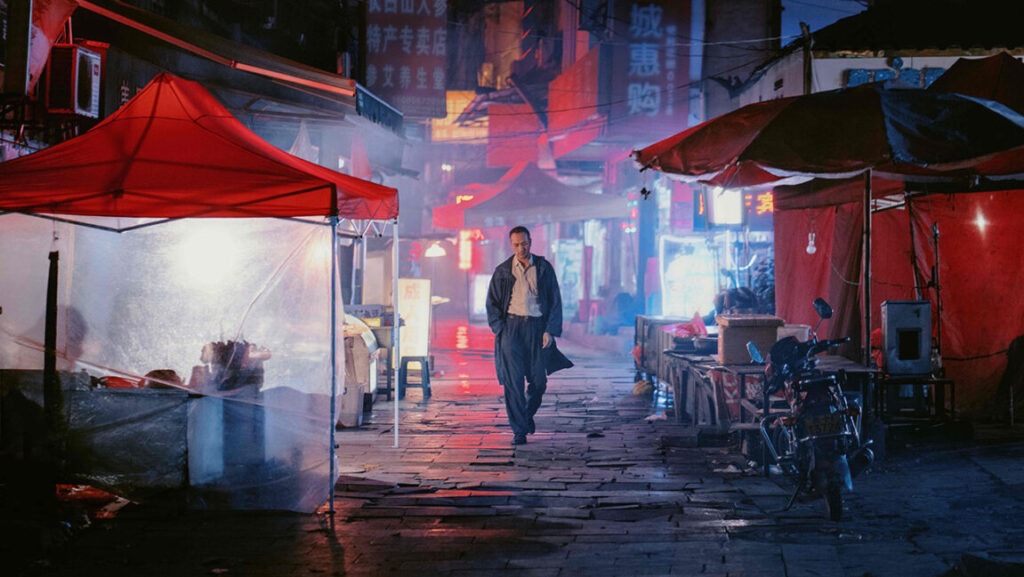
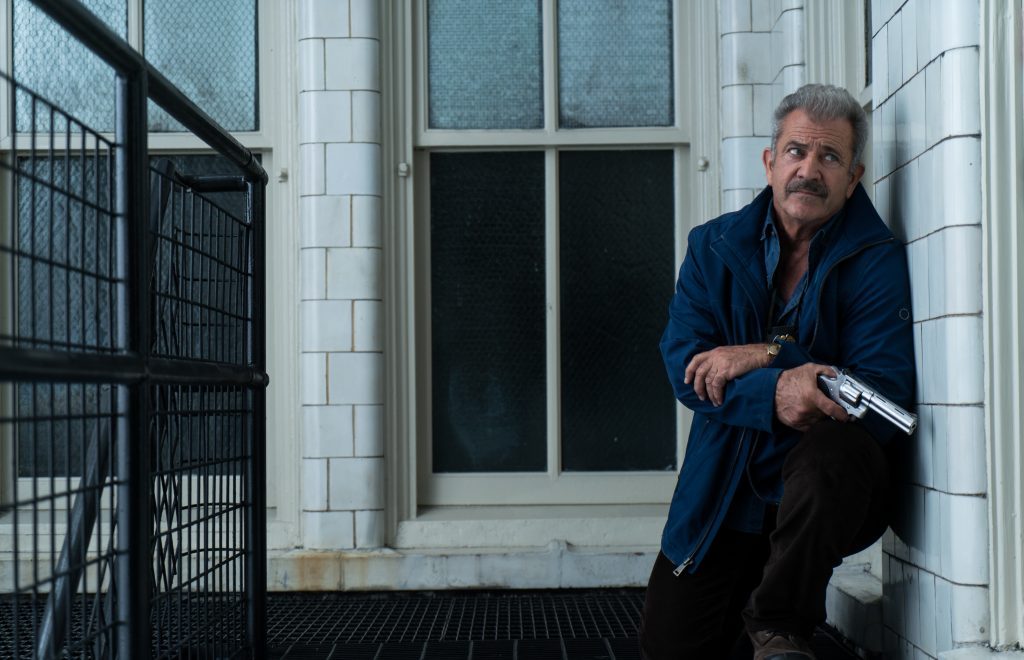
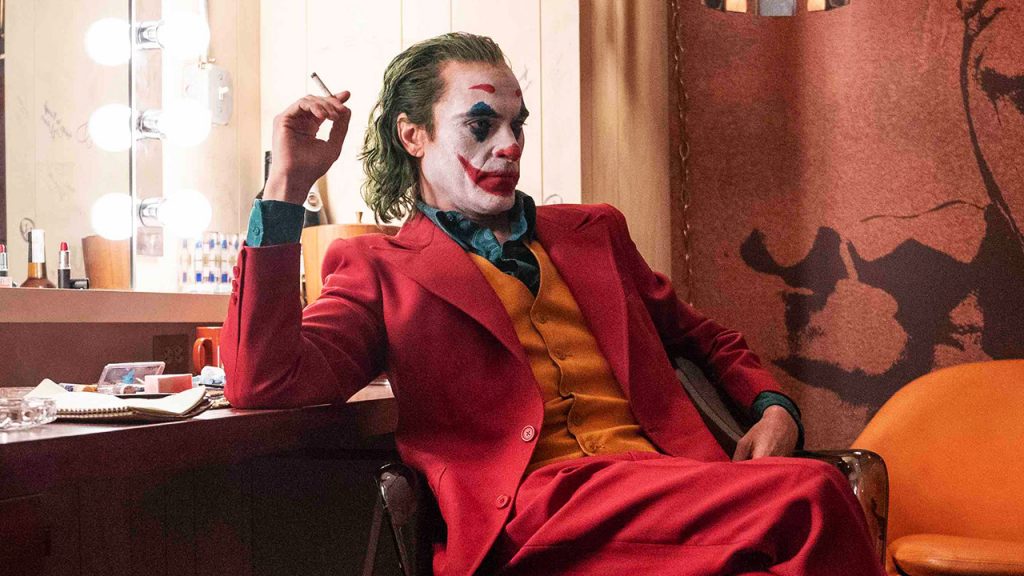
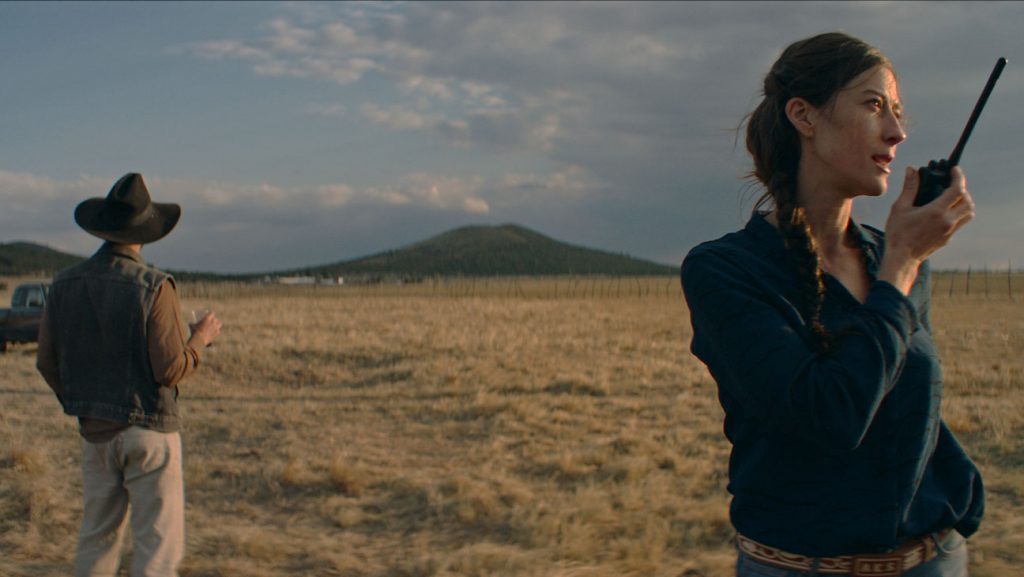






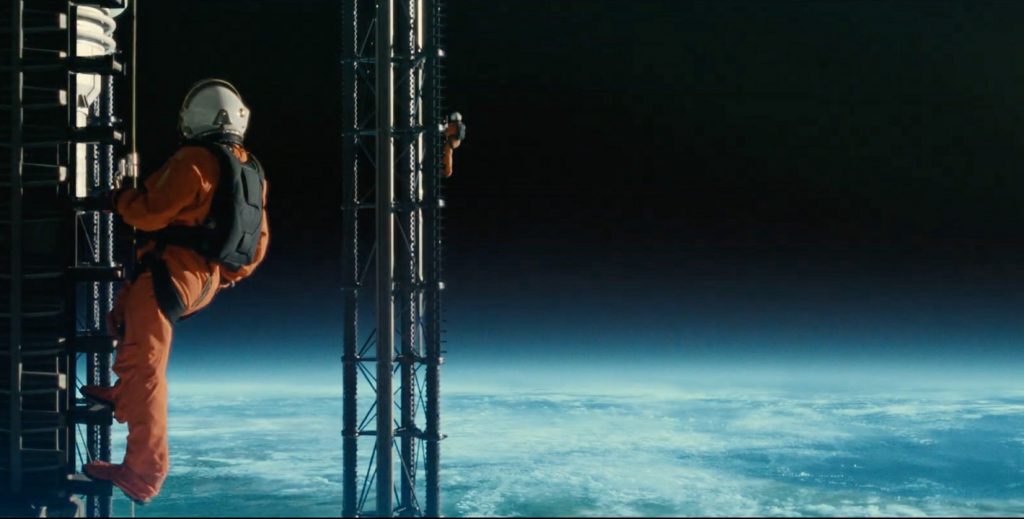
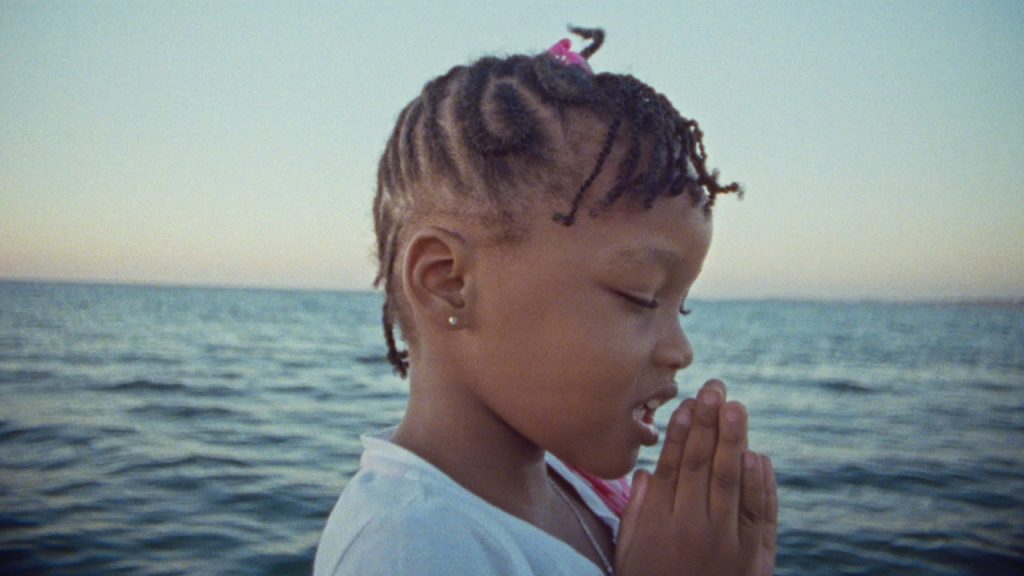



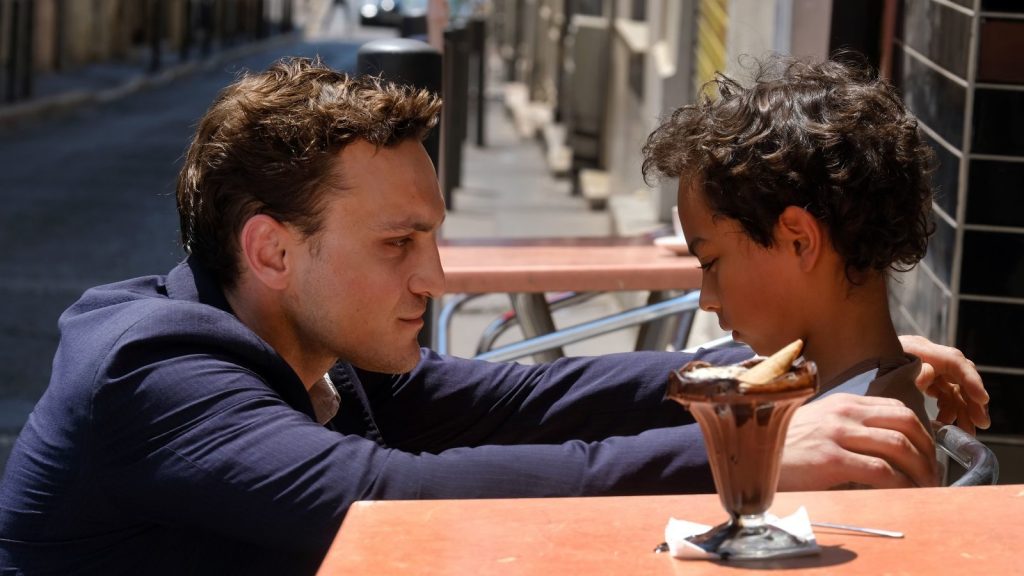


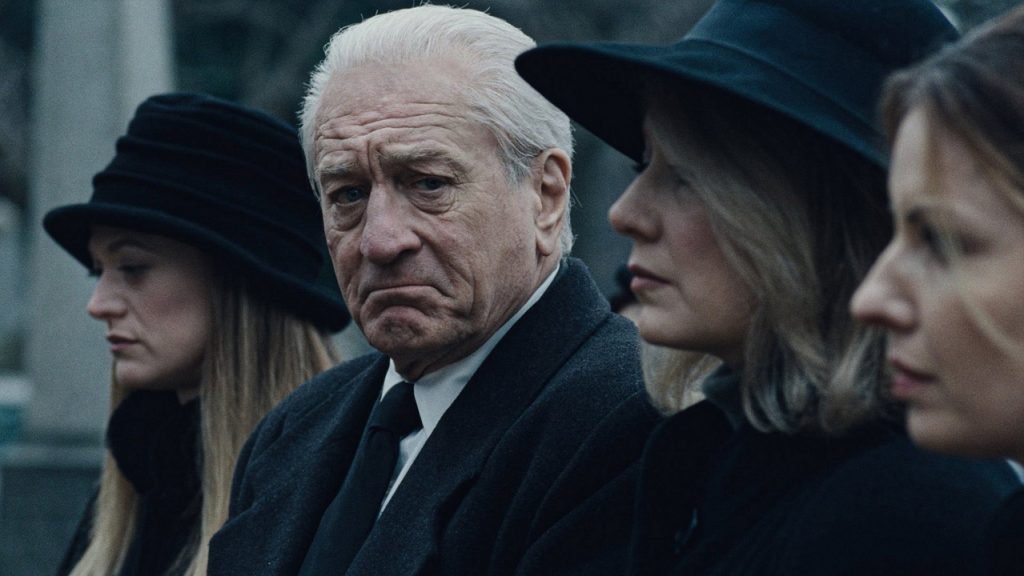

Comments are closed.